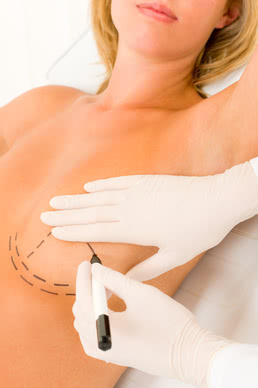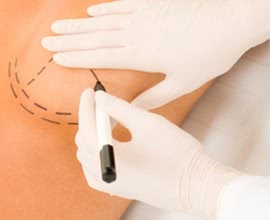Breast Augmentation: Implants vs. Fat Transfer
I've never agreed with the opinion that if nature created us the way it had planned to, we're no longer allowed to artificially change anything in our bodies. Many people still think plastic surgery is the way one interpheres in the nature's work. I disagree. I believe the Universe created us so we can daily improve ourselves, our physical as well as our mental health.
When it comes to breast enlargement, there're two basic types of surgery, breast augmentation with a help of implants, and fat transfer to breasts from other parts of the body. Which one to choose, really depends on your health situation and your expectations.
Two in One
The good news about fat transfer is that not only your breasts become bigger, but also those parts where the fat was taken out from, like your thighs, legs, an abdomen, get smaller.
Natural Look
Also, the attractivity of fat transfer lies in the fact that the result of the surgery is very natural feeling and looking breasts, because... well, it's implant-free. Fat transfer is a minimally-invasive alternative to implants, and it's usually done with no general anaesthesia (unlike augmentation with implants). However, it's good to keep in mind that it might subsequently have all downsides of liposuction, like, for example, saggy skin in those parts of a body that have been touched.

Size
Fat transfer is pretty much limited in the amount that your breast can be enlarged. Also, women who are very slim are obviously not the ideal candidates for it (as there's no fat in their body to transfer). However, fat transfer is great for breast reconstruction if somebody has had a lumpectomy, or for correcting defects like uneven breasts. If you want to enlarge your breast for more than one or two cups, you better consider implants.
Safety
Yes, this is one of those hottest topics in cosmetic surgery at the moment. Implants have been here with us for a while, and they proved to be safe (plastic surgeons even joke that they're the most throughout researched medical device in existence). Fat transfer is the procedure currently being studied. It's been very successful for buttock enlargement, but breast is a more 'complicated' part of a body... There're still unanswered questions about what fat really does when it comes in contact with breast tissue, what risks it might take in the future. However,
a significant part of plastic surgeons also agree that the fact that the procedure is relatively new, does not make it unsafe. Implants had also been a controversial topic for a couple of decades.
Downtime after Surgery
After fat transfer, the recovery time is really minimal. However, because there may be some bruising and swelling, it's best to wait one to two weeks before you hit the gym. As for implants, normally resumption of full activity is allowed from after two up to a few weeks, depending on the case.
Long-Lasting Effect?
I think it should be every man's aim to try to look good, and if plastic surgery helps, then why not to use what it gives? Besides, breast is probably the only part of a body that can't be made in a gym.
Even though breast implants manufacturers do not consider them 'lifetime devices', most women will live their whole life with their original implants and never require additional surgery. The downside of fat transfer is that the transplanted fat cells often don't survive long term (about a few years) as they may be absorbed by the body and affected every time a woman loses weight.
Price
As breast augmentation by fat grafting actually includes two procedures (liposuction and fat transfer), the cost of the whole procedure is usually higher than of the one with the usage of implants.
Whatever surgery you decide to choose in the end, it's good to keep in mind that your health and your well-being are definitely more important than the size of your breast cups. The healthiest option is always the best option.
Sources used:














